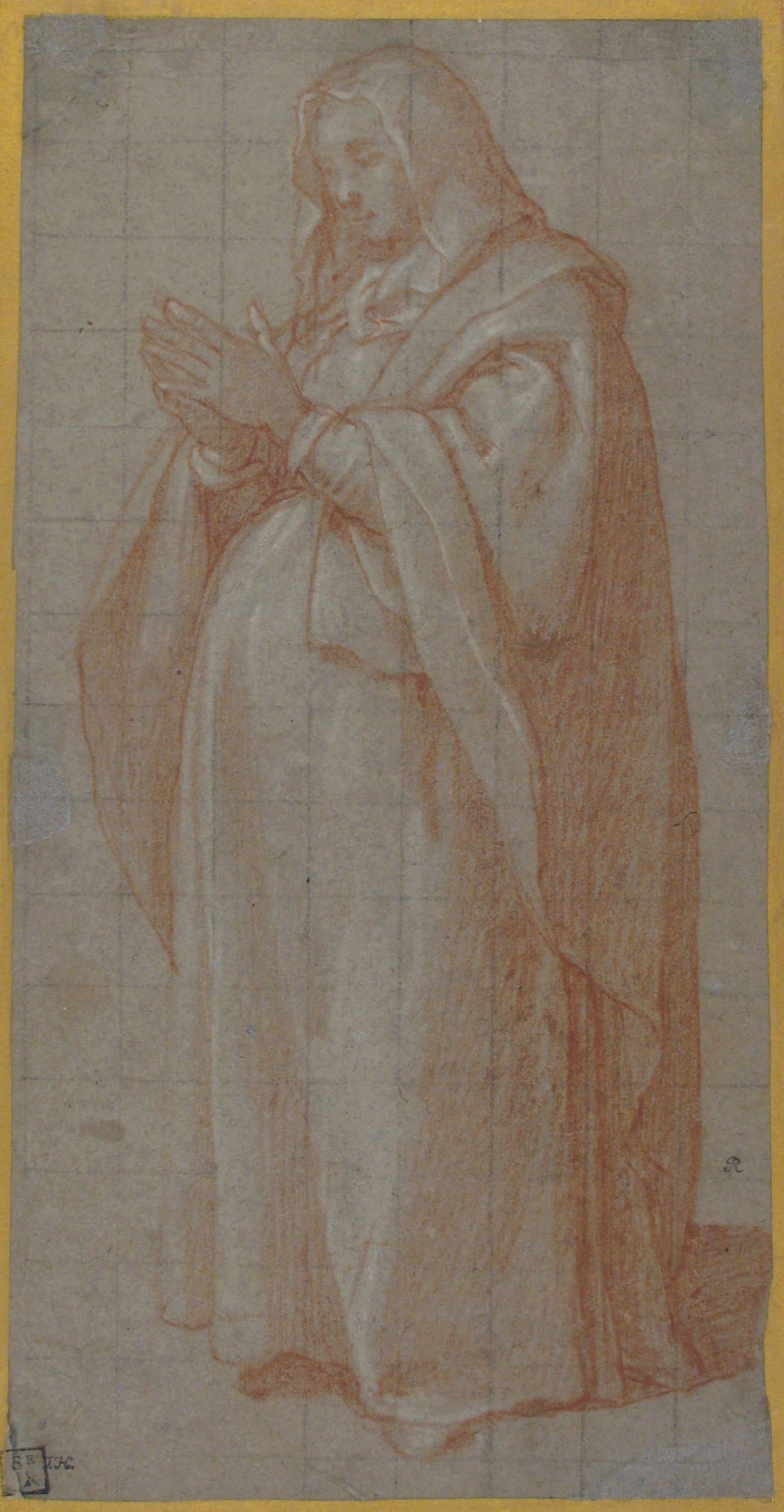Standing Pregnant Woman (Study for the Pregnant Virgin Mary)
Bartolomeo Cesi Italian
Not on view
Traditionally attributed to Denys Calvaert – as recorded on the mount by an elegant inscription of Jonathan Richardson Sr. (1667–1745) – this drawing is a typical example of the chalk draughtsmanship of Bartolomeo Cesi, a leading artist of the Bolognese scene during the age of the Counter Reformation in the late sixteenth century. Drawn in red and white chalks on blue paper, this sheet is in fact a study for the ‘Pregnant Virgin Mary ’, originally frescoed by Cesi in the Manzoli (or Manzuoli) altar of the Church of Santa Maria delle Febbri known as Madonna di Miramonte (Bologna) and now preserved as a detached fresco in the Chiostro delle Madonne of the Certosa di Bologna. The correspondence with the fresco is very close, though in the fresco the Virgin holds an open book in her joined hands.In the church of Miramonte, the fresco was first noticed by Carlo Cesare Malvasia in his account ‘Felsina Pittirice’ (as "a fresco la B.[eata] V.[ergine] gravida nell’Altare Manzoli nella Madonna di Miramonte, una copia della quale in picciol rame trivansi presso il sig. Floriano Malzezzi Concanonico nostro, e tante presso tant’altari, essendo stata così comunemente piacciuta" 1686 [ed. 1841], p. 246). In these words, Malvasia highlighted the incredible visual fortune of Cesi’s ‘Pregnant Virgin’, which was copied in numerous versions and various media, just shortly after its execution.
Alberto Graziani (1939), who identified the fresco in the Certosa as Cesi's work, suggested that a pen and wash drawing in the Uffizi, Florence, was a preliminary study for the Manzuoli fresco (Gabinetto Disegni e Stampe degli Uffizi inv. no. 12736 see: Graziani 1939, pp. 85, 95). The Uffizi drawing represents an ‘Annunciation’ of somewhat unusual iconography: the space is occupied in part by a dedicatory tablet and although her stance and drapery are paralleled in our drawing and the final fresco, the figure of the Virgin is of course not yet pregnant. In light of the Uffizi sheet, Cesi likely modified his initial idea of painting an ‘Annunciation’ and - with a drastic change of iconography - opted for the unusual image of a standing pregnant Virgin.
(Furio Rinaldi, 2015)
Due to rights restrictions, this image cannot be enlarged, viewed at full screen, or downloaded.
This artwork is meant to be viewed from right to left. Scroll left to view more.





